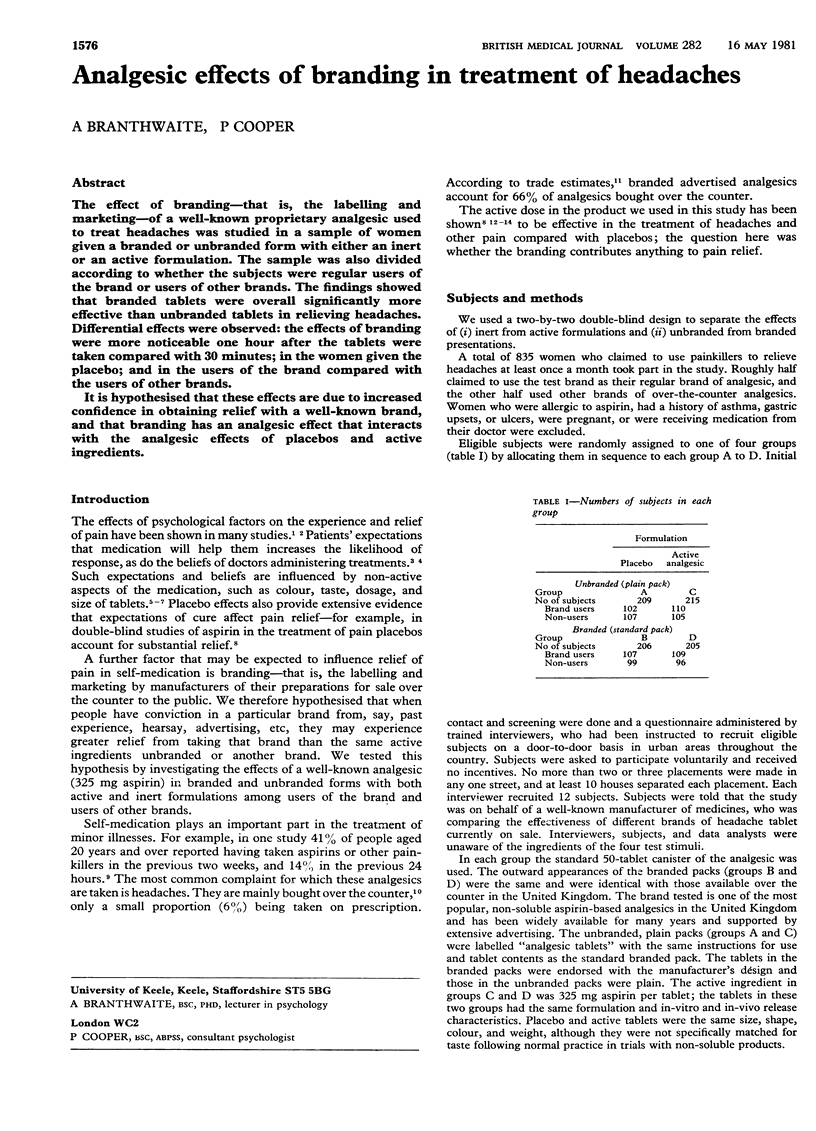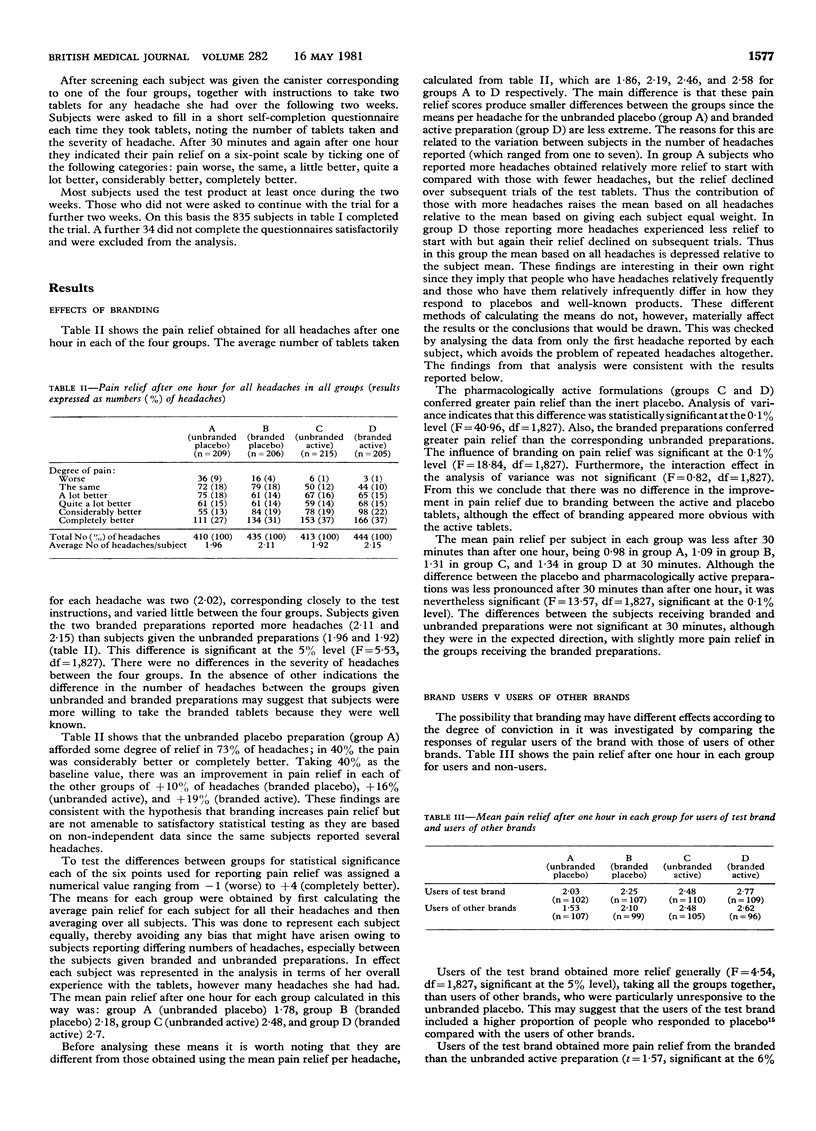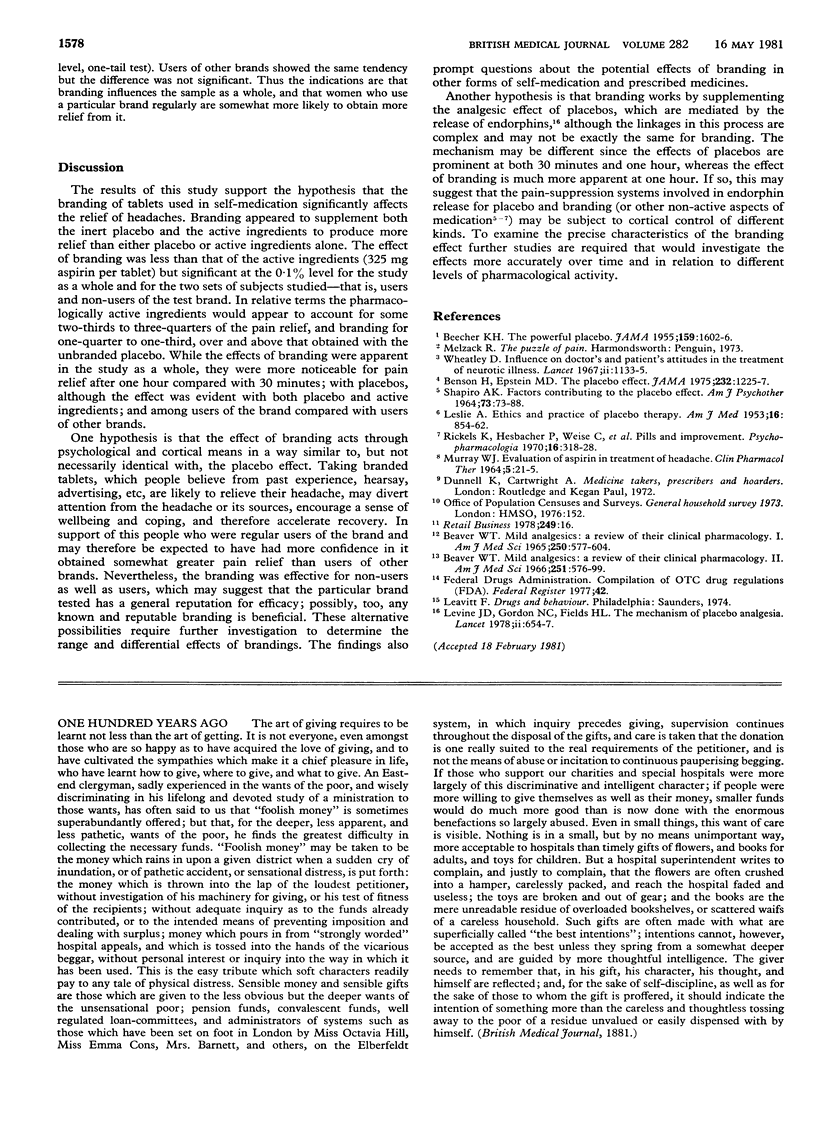Abstract
The effect of branding--that is, the labelling and marketing--of a well-known proprietary analgesic used to treat headaches was studied in a sample of women given a branded or unbranded form with either an inert or an active formulation. The sample was also divided according to whether the subjects were regular users of the brand or users of other brands. The findings showed that branded tablets were overall significantly more effective than unbranded tablets in relieving headaches. Differential effects were observed: the effects of branding were more noticeable one hour after the tablets were taken compared with 30 minutes; in the women given the placebo; and in the users of the brand compared with the users of other brands. It is hypothesised that these effects are due to increased confidence in obtaining relief with a well-known brand, and that branding has an analgesic effect that interacts with the analgesic effects of placebos and active ingredients.
Full text
PDF


Selected References
These references are in PubMed. This may not be the complete list of references from this article.
- BEECHER H. K. The powerful placebo. J Am Med Assoc. 1955 Dec 24;159(17):1602–1606. doi: 10.1001/jama.1955.02960340022006. [DOI] [PubMed] [Google Scholar]
- Beaver W. T. Mild analgesics. A review of their clinical pharmacology. II. Am J Med Sci. 1966 May;251(5):576–concl. doi: 10.1097/00000441-196605000-00012. [DOI] [PubMed] [Google Scholar]
- Beaver W. T. Mild analgesics. A review of their clinical pharmacology. Am J Med Sci. 1965 Nov;250(5):577–contd. [PubMed] [Google Scholar]
- Benson H., Epstein M. D. The placebo effect. A neglected asset in the care of patients. JAMA. 1975 Jun 23;232(12):1225–1227. doi: 10.1001/jama.232.12.1225. [DOI] [PubMed] [Google Scholar]
- LESLIE A. Ethics and practice of placebo therapy. Am J Med. 1954 Jun;16(6):854–862. doi: 10.1016/0002-9343(54)90450-7. [DOI] [PubMed] [Google Scholar]
- Levine J. D., Gordon N. C., Fields H. L. The mechanism of placebo analgesia. Lancet. 1978 Sep 23;2(8091):654–657. doi: 10.1016/s0140-6736(78)92762-9. [DOI] [PubMed] [Google Scholar]
- MURRAY W. J. EVALUATION OF ASPIRIN IN TREATMENT OF HEADACHE. Clin Pharmacol Ther. 1964 Jan-Feb;5:21–25. doi: 10.1002/cpt19645121. [DOI] [PubMed] [Google Scholar]
- Rickels K., Hesbacher P. T., Weise C. C., Gray B., Feldman H. S. Pills and improvement: a study of placebo response in psychoneurotic outpatients. Psychopharmacologia. 1970;16(4):318–328. doi: 10.1007/BF00404738. [DOI] [PubMed] [Google Scholar]
- Wheatley D. Influence of doctors' and patients' attitudes in the treatment of neurotic illness. Lancet. 1967 Nov 25;2(7526):1133–1135. doi: 10.1016/s0140-6736(67)90634-4. [DOI] [PubMed] [Google Scholar]


